Faster diagnostics through cheap, ultra-portable blood testing
New sensor combines state-of-the-art performance and accuracy for widespread use.
Sep 1st, 2011
Read more
New sensor combines state-of-the-art performance and accuracy for widespread use.
Sep 1st, 2011
Read more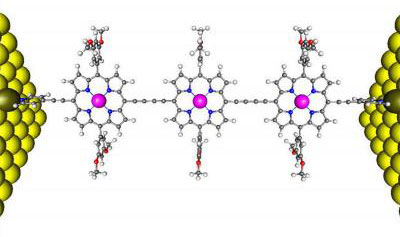 A research center of the CSIC participates in a study that refutes the hypothesis that their movement is based on jumps from one region to another. The porphyrins may be used in quantum computing since they keep the wave nature of electrons.
A research center of the CSIC participates in a study that refutes the hypothesis that their movement is based on jumps from one region to another. The porphyrins may be used in quantum computing since they keep the wave nature of electrons.
Sep 1st, 2011
Read moreIn seinem heute veroeffentlichten Sondergutachten "Vorsorgestrategien fuer Nanomaterialien" gibt der SRU Empfehlungen fuer einen verantwortungsvollen, vorsorgeorientierten Umgang mit Nanotechnologie.
Sep 1st, 2011
Read moreThe Goettingen-based physicist Stefan Hell has designed high-resolution optical microscopes which can see many times more sharply than was thought possible.
Sep 1st, 2011
Read moreBy turning a common problem in chip manufacture into an advantage, MIT researchers produce structures only 30 atoms wide.
Sep 1st, 2011
Read moreResearchers led by ETH professor Yaakov Benenson and MIT professor Ron Weiss have successfully incorporated a diagnostic biological "computer" network in human cells. This network recognizes certain cancer cells using logic combinations of five cancer-specific molecular factors, triggering cancer cells destruction.
Sep 1st, 2011
Read more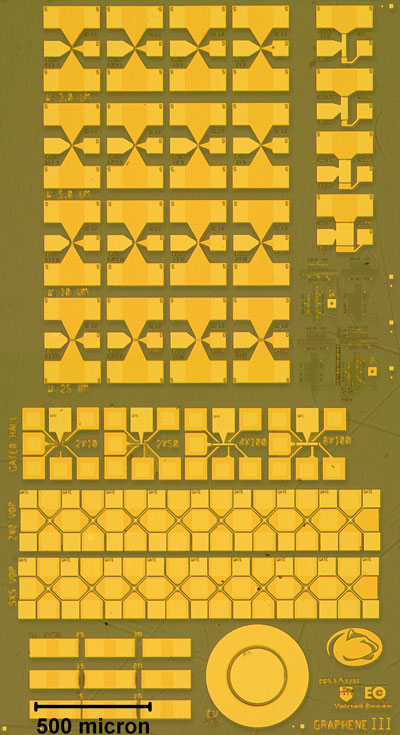 A technique that uses hydrogen to improve transistor performance on real-world graphene devices has been demonstrated on the wafer-scale by researchers in Penn State's Electro-Optics Center.
A technique that uses hydrogen to improve transistor performance on real-world graphene devices has been demonstrated on the wafer-scale by researchers in Penn State's Electro-Optics Center.
Aug 31st, 2011
Read moreIn solid materials with regular atomic structures, figuring out weak points where the material will break under stress is relatively easy. But for disordered solids, like glass or sand, their disordered nature makes such predictions much more daunting tasks. Now, a collaboration combining a theoretical model with a first-of-its kind experiment has demonstrated a novel method for identifying "soft spots" in such materials.
Aug 31st, 2011
Read moreFuture lighting needs may be supplied by a new breed of light emitting diode, or LED, that conjures light from the invisible world of quantum dots.
Aug 31st, 2011
Read more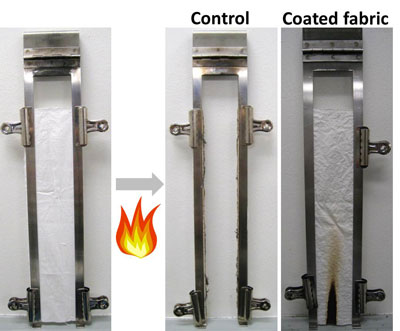 The technology in 'fire paint' used to protect steel beams in buildings and other structures has found a new life as a first-of-its-kind flame retardant for children's cotton sleepwear, terrycloth bathrobes and other apparel.
The technology in 'fire paint' used to protect steel beams in buildings and other structures has found a new life as a first-of-its-kind flame retardant for children's cotton sleepwear, terrycloth bathrobes and other apparel.
Aug 31st, 2011
Read moreResearchers have created and tested miniature devices that are implanted in tumors to generate oxygen, boosting the killing power of radiation and chemotherapy.
Aug 31st, 2011
Read more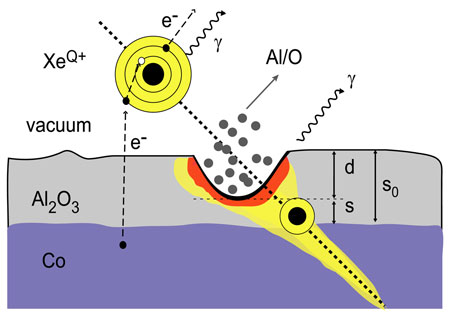 Much like a meteor impacting a planet, highly charged ions hit really hard and can do a lot of damage, albeit on a much smaller scale. And much like geologists determine the size and speed of the meteor by looking at the hole it left, physicists can learn a lot about a highly charged ion's energy by looking at the divots it makes in thin films.
Much like a meteor impacting a planet, highly charged ions hit really hard and can do a lot of damage, albeit on a much smaller scale. And much like geologists determine the size and speed of the meteor by looking at the hole it left, physicists can learn a lot about a highly charged ion's energy by looking at the divots it makes in thin films.
Aug 31st, 2011
Read moreSolar or photovoltaic cells represent one of the best possible technologies for providing an absolutely clean and virtually inexhaustible source of energy to power our civilization. However, for this dream to be realized, solar cells need to be made from inexpensive elements using low-cost, less energy-intensive processing chemistry, and they need to efficiently and cost-competitively convert sunlight into electricity. A team of researchers with the Lawrence Berkeley National Laboratory has now demonstrated two out of three of these requirements with a promising start on the third.
Aug 31st, 2011
Read more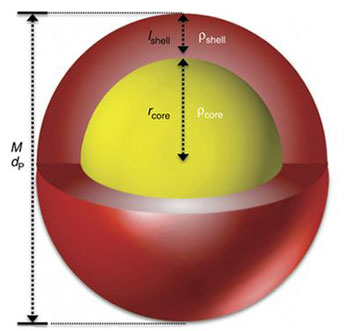 Precise measurement of the molecular weight, size and density of a nanoparticle in a single procedure is now possible, thanks to an ultracentrifugation method, dusted off by scientists at EPFL.
Precise measurement of the molecular weight, size and density of a nanoparticle in a single procedure is now possible, thanks to an ultracentrifugation method, dusted off by scientists at EPFL.
Aug 31st, 2011
Read moreResearchers at RIKEN have developed a ground-breaking new aqueous reagent which literally turns biological tissue transparent. Experiments using fluorescence microscopy on samples treated with the reagent have produced vivid 3D images of neurons and blood vessels deep inside the mouse brain.
Aug 31st, 2011
Read more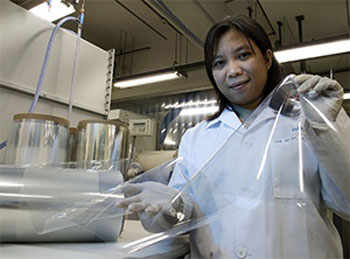 A nanoparticle-infused film brings innovative lighting and display technologies closer to reality.
A nanoparticle-infused film brings innovative lighting and display technologies closer to reality.
Aug 31st, 2011
Read more